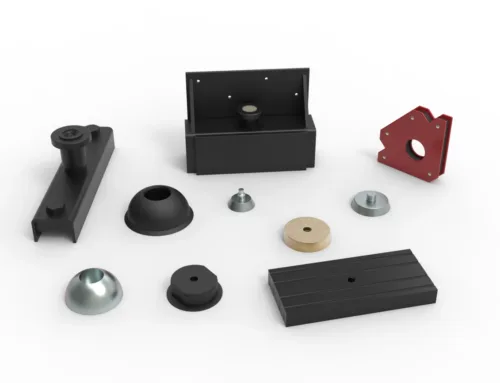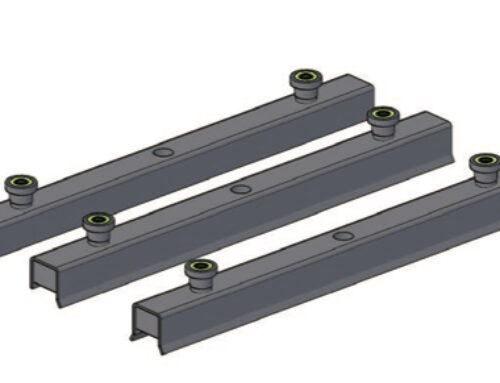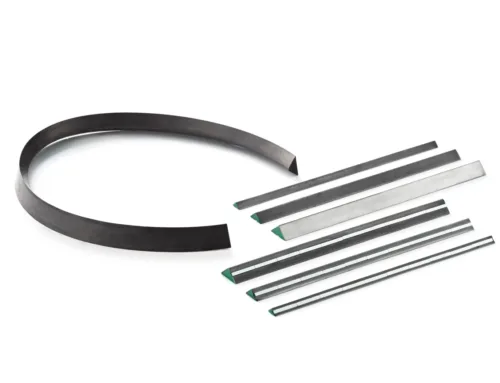Are you curious about what polarity means in magnetic contexts and why it’s such a big deal? Understanding magnetic polarity is essential whether you’re dealing with everyday magnets, industrial magnetic materials, or cutting-edge magnetic devices.
In simple terms, polarity defines the two ends of a magnet, commonly known as the North and South poles, and influences how magnets interact, attract, or repel each other. But there’s more beneath the surface: from atomic structures to practical applications, polarity shapes how magnetic fields behave and how we harness them in technology.
If you want a clear, straightforward explanation on magnetic polarity, why it matters, and how it impacts the materials and products you work with, you’re in the right place. Let’s dive into the fundamentals of polarity in magnetism and explore why it’s crucial for everything from tiny sensors to large industrial magnets.
What is Magnetic Polarity
Magnetic polarity refers to the two opposite ends or poles of a magnet where its magnetic force is strongest. Simply put, every magnet has a North pole and a South pole. These poles are the source of magnetic attraction and repulsion—the core of what makes magnets work.
The North pole is the end of a magnet that points toward the Earth’s geographic North when freely suspended, while the South pole points toward the geographic South. This polarity is what causes magnets to attract or repel each other: opposite poles (North and South) attract, while like poles (North-North or South-South) repel.
Magnetic polarity is closely tied to the magnetic field generated by a magnet. The magnetic field lines flow from the North pole to the South pole outside the magnet, creating a closed loop that continues inside the magnet from South back to North. This flow of magnetic fields explains why magnetic polarity is essential—it defines the direction and strength of the magnetic forces around the magnet.
Understanding magnetic polarity helps us predict how magnets will behave in different environments, whether in simple fridge magnets or complex magnetic materials used in industrial applications.
The Science Behind Magnetic Polarity

Magnetic polarity starts at the atomic level. Inside atoms, electrons spin and move, creating tiny magnetic fields. When many of these atomic magnets line up in the same direction, they form what’s called a magnetic domain. These aligned domains give a material its overall magnetic polarity—meaning it has a clear North and South pole.
Magnetic domain alignment is key because if the domains point randomly, the material won’t act like a magnet. But when they’re lined up, the magnetic poles become strong and stable.
Magnetic field lines represent how the magnetic force flows from the North pole to the South pole. These invisible lines show the direction of the magnetic polarity and help us understand how magnets interact with each other. The way these field lines curve and connect clearly marks the magnetic poles and polarity of the magnet.
Types of Magnetic Poles and Their Behavior

Magnetic polarity involves two main types of poles: permanent and temporary. Permanent magnetic poles are found in magnets that keep their polarity over time, like the magnets in your fridge or in electric motors. On the other hand, temporary magnetic poles appear only when certain materials are exposed to a magnetic field and disappear once the field is removed. These are common in materials like iron when near a strong magnet.
When it comes to how magnetic poles interact, the rule is simple: like poles repel each other (north repels north, south repels south), while unlike poles attract (north pulls south). This push-pull behavior is the foundation of how magnets work in devices and machines.
A magnetic pole always comes in pairs, known as magnetic dipoles, meaning a magnet has both a north and a south pole. This dipole nature creates the magnetic field lines, flowing from the north pole to the south pole, which defines the direction of magnetic polarity.
Understanding these types and behaviors of magnetic poles helps in better designing magnets for the U.S. market where applications range from industrial motors to consumer electronics. For deeper details on magnetic domain structure and their effects, you can check what is magnetic hysteresis.
Importance of Polarity in Magnetic Materials
Magnetic polarity plays a big role in how magnetic materials work. The way the North and South poles are arranged affects how magnets interact with other materials and devices. If the polarity is off, the magnet won’t perform as expected, which can cause issues in many applications.
Here’s why polarity matters:
- Functionality of Magnetic Materials: The correct polarity ensures magnets create the desired magnetic field and force. This is crucial for motors and sensors to operate smoothly and efficiently.
- Everyday Devices: Think about electric motors in your appliances, magnetic sensors in cars, or magnetic storage like hard drives. All of these rely on precise magnetic polarity to function properly.
- Industrial Use: For manufacturers using magnetic materials, getting polarity right means better performance and reliability. NBAEM supplies high-quality magnetic materials with consistent polarity, ensuring their magnets meet tough industrial standards.
In short, polarity isn’t just a detail—it’s critical for the performance and longevity of magnetic materials in both daily gadgets and heavy-duty industrial equipment. If you want to dive deeper into magnetic material properties and how they behave, NBAEM offers a great range of products tailored for the U.S. market.
Identifying and Testing Magnetic Polarity

Knowing how to identify and test magnetic polarity is key for anyone working with magnets or magnetic materials. The most common and simple method is the compass test. By placing a compass near a magnet, you can observe which end causes the compass needle to point north—this reveals the magnet’s polarity. The end attracting the needle’s north points to the magnet’s south pole, and vice versa.
For more precise results, magnetic sensors are often used. These tools can detect the strength and direction of magnetic fields, helping to map out polarity accurately. Sensors are especially useful in industrial settings where consistency and reliability matter.
NBAEM offers a variety of advanced tools and technologies tailored for magnetic material testing. These include devices that measure polarity with high precision, ensuring that the magnetic properties meet specific industry standards. Whether it’s permanent magnets for motors or sensors for electronics, NBAEM’s testing solutions make it easier to verify polarity and maintain quality throughout production.
Applications of Magnetic Polarity in Industry
Understanding magnetic polarity is key to designing effective magnetic components. When you know the exact North and South pole orientation, you can create magnets that fit perfectly in devices—making them work better and last longer.
In manufacturing, magnetic assemblies rely heavily on polarity customization. By adjusting the polarity, manufacturers can control how magnets interact within motors, sensors, and other equipment. This customization improves efficiency, reduces energy loss, and enhances overall product performance.
NBAEM offers tailored magnetic solutions that meet specific industry needs. For example, their custom magnetic assemblies help automotive and industrial clients optimize motor designs for smoother operation. They also supply magnets with precise polarity setups for advanced sensors used in robotics and automation here in the U.S. Their expertise ensures magnet materials perform consistently, meeting strict quality and durability standards necessary for local markets.
In short, leveraging magnetic polarity in industrial products leads to smarter, more reliable devices — a clear advantage for American manufacturers and consumers.
FAQs about Magnetic Polarity
Can polarity be reversed?
Yes, magnetic polarity can be reversed. This usually happens when a magnet is exposed to a strong external magnetic field or high temperatures. Reversing polarity is common in electromagnets and some permanent magnets when re-magnetized.
How does polarity affect magnet strength?
Polarity itself doesn’t change the strength of a magnet, but the alignment of magnetic domains related to polarity does. Proper alignment improves magnet strength, while misalignment weakens it.
Is polarity affected by temperature or external forces?
Yes, temperature and external forces can impact magnetic polarity. High heat can cause a magnet to lose its polarity by disturbing the magnetic domains. Strong shocks or physical impacts can also change domain alignment, sometimes weakening or altering the polarity.
Understanding these factors helps in choosing and maintaining magnetic materials, especially for applications in industries across the United States where reliability and performance matter.





[…] those interested in more magnetic science basics, you might find magnetic polarity explained useful to understand how these advances fit into the bigger […]
[…] Understanding these basics helps you choose the right magnetic lifter based on your lifting needs and control preferences. For more on magnetic principles and how polarity affects magnetic performance, see this detailed explanation on what polarity means in magnetic fields. […]